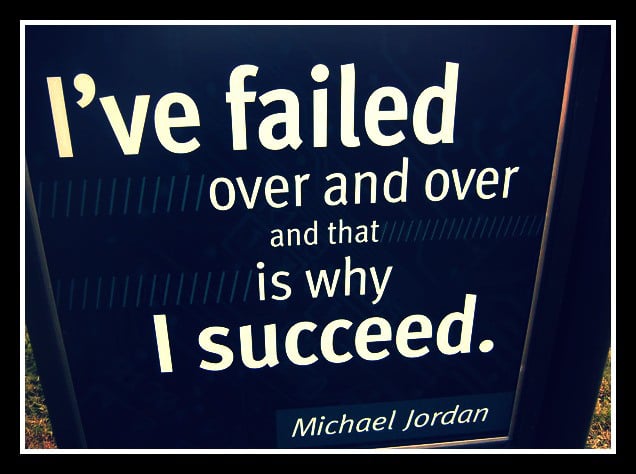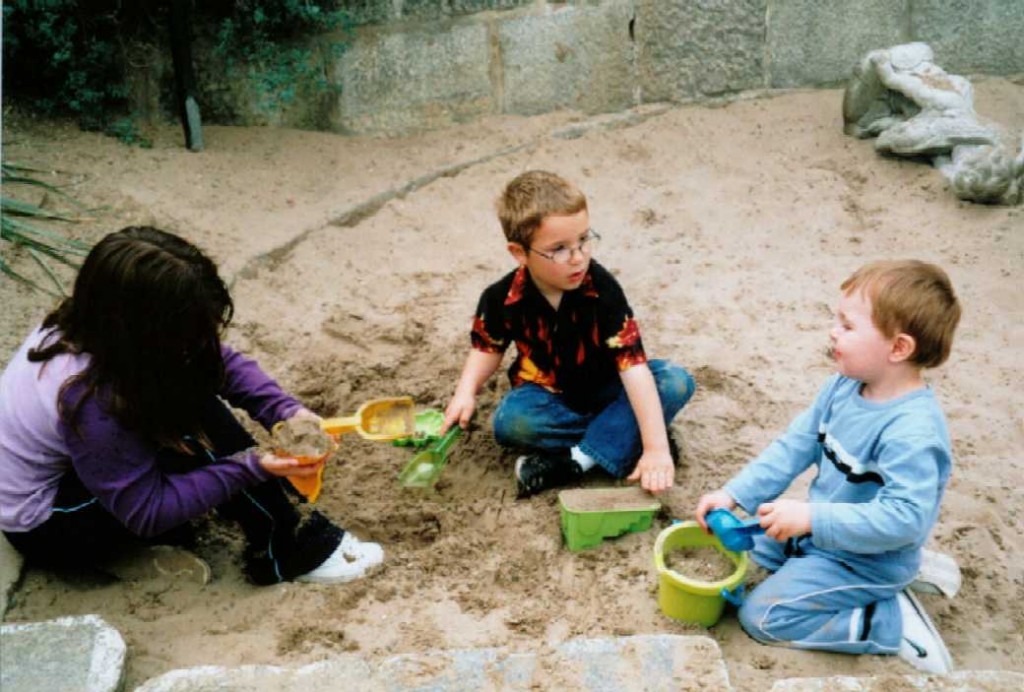Post by Ian Kelly & Heather L. Brennan Smith (Principal at Lilja School)
“It is impossible to live without failing at something, unless you live so cautiously that you might has well not have lived at all, in which case you have failed by default.” – J. K. Rowling
“Success is the ability to go from one failure to another with no loss of enthusiasm” – Winston Churchill
Chances are that when you grew up, someone in your life encouraged you to find your own success. It is also very likely that someone encouraged you to persist. Think back to your childhood and ponder for a moment the very first time when someone told you, “If at first you don’t succeed, try, try again!” Yet, somewhere along the way, we form our own beliefs about success and failure. In theory, many of us believe that failure is a fundamental driver in the process of learning and growth so why is it so hard to accept, especially when it comes to our children?
Our well-intentioned friends and family give us mixed messages when it comes to failure. Avoid failure. Focus on success. We avoid it at all costs.
Even more unfortunate than our personal associations with failure are those we draw for our children. Beyond teaching them that failure is to be avoided, we do all that we can to protect them from it. These tendencies are perfectly natural and they go far beyond the realm of parenting. In Seth Godin’s (2010) piece Redefining Failure he captures our current concept of and stance towards failure, “We think that failure is the opposite of success, and we optimize our organizations to avoid it. We install layers and layers of management to eliminate risk and prevent catastrophes.”

Photo courtesy of www.agencypost.com
In spite of our altruistic tendencies to protect our children from failure, we deprive them of critical “learning” experiences when we don’t accept the missteps that children take along the way. Children need opportunities to fail. Their growth and development rely on these rich contexts for learning. Our job, as parents and as educators, is to provide structured, developmentally appropriate opportunities to fail or, in other words, to learn. When we consider this notion, there are two important questions: what do children learn when we allow them to fail and how do we structure opportunities that are appropriate and productive?
Before we consider these questions though, let’s re-imagine our own paradigms for failure. This is a critical first step because consciously and unconsciously we communicate important and influential messages to children that form their perceptions of failure.
First, consider failure first as a positive thing. Failure is great! Without it we would be perfect and there would be nothing to learn. Secondarily, think of failure not as a shortcoming but as an opportunity, a guidepost on the path towards learning. Failure bothe presents us with and leads is toward opportunities for for success. If we are patient and learn to embrace failure as a positive and integral part of the learning process, then we are well on our way to supporting our children.
What do children learn from failure?
Angela Lee Duckworth calls it “grit.” Grit is what children learn from failure. They learn to persevere and persist in the face of challenge and novel tasks that force them to apply known information to solve new problems. Children come to understand the limits of their current knowledge and ability and how to grow and stretch to tackle the next challenge they face. They learn to identify their strengths and their weaknesses. Students come to understand how to leverage strengths and improve weaknesses. Most importantly, they learn that challenge is to be expected in life and that it is their effort and their hard work that determine the outcome of that challenge. Carol Dweck at Stanford University calls this mentality the “growth mindset.”
How do we structure appropriate and productive opportunities for failure?
Providing children with opportunities to fail, struggle, and learn cannot happen in a vacuum. We can’t just toss them to the wolves and expect them to figure things out. We must remember that children develop perseverance and persistence over time. If we put them into situations in which they are unable to find success we hinder their development. So, what is the context in which kids can really benefit from failure? When do we let them struggle? When do we intervene? These questions rely heavily upon a social context for learning, an understanding of our children and an evolving understanding of ourselves.
A child’s social context for learning, or failure, is critical. Young children are keen observers, especially of adults. They watch and listen, taking cues from us as they attempt to make sense of their world. If a child is supported in an environment where adults behave and speak in way that communicates positive messages about failure and embrace it as a learning opportunity then we are well on our way to creating a context that is ripe for learning.
The second part of this context is our ability as parents and educators to take a step back from the situation and make rational, balanced decisions about when to intervene and when to let them figure it out. This can be challenging because it is in our nature to protect and support.
A few years back Mr. Kelly was spending time with a good friend and they were playing with their young children. As always they liked (and continue to like) to do, they were analyzing the play of their children and the situations that arose as they interacted. Sawyer (Mr. Kelly’s son) was about two years old at the time and was moving backwards without looking where he was going. There was a block on the carpet that he would obviously trip on and fall. As is usually the case, there were a few seconds available to consider options and make a decision about how to manage the situation.
The first analysis was safety. Is he going to really hurt himself if he is allowed to fall. At the time, he was on the carpet so he had a soft spot to land and there were no other objects around that he would hit on the way down and hurt himself. Safety, wasn’t an issue. The second analysis was the potential for learning and the importance of the lesson. In that split second Ian decided that this was an important lesson. Walking backward without checking your surrounding is inherently dangerous. This is a concept that a two year old could begin to grasp. So as it turns out, Sawyer tripped on the block and landed on his bum. He looked confused and then fussed for a minute. When asked what happened and he said, “Fell.” When asked why he replied, “Block.” After a little clarification and a simple, “Walking backwards is dangerous.” He moved on and was right back to playing with his pals. We are not suggesting for a second that this incident ended the walking backward phenomenon but we will suggest that it is the accumulation of these experiences that eventually teaches him (and therefore ceases the behavior) that walking backwards is dangerous.
Learning to watch where you are going and, in all possible circumstances, walk forward is a product of cumulative experience. It is not a function of the words we use in warning of or response to the “failures” that children encounter. If we don’t take the time to step back, analyze the situation, and ensure that we provide those structured opportunities for failure, our children will only have our words. Unfortunately that’s not enough. Experience is the true teacher.
Acknowledging our own anxieties about failure is not easy. What’s more is that we sometimes hold our children to a different standard than we do ourselves. After all, they represent our hopes, our dreams. We don’t want them to make the same mistakes that we did and we sometimes doubt their ability to see how their actions just might affect their future. But success is about risk-taking and risk-taking is. . . risky! Conventional wisdom in the world of business tells us that the the greater the risk, the greater the reward. In the United States, the biggest risk-takers are also some of our greatest entrepreneurs. But children aren’t going to succeed with every risk they take, nor do we. When we take a risk, the threat of failure becomes palpable. What’s important is that we capitalize on these opportunities by carving out time for personal reflection and self-monitoring. When we make mistakes, we ask: What is it that I was trying to achieve? What stood in the way of achieving my goals? What could I have done differently to achieve a different outcome and what action steps must I take in order to achieve my goal? Once we can answer these questions, we begin the process of building a brighter vision for ourselves, of self-acceptance, and even more importantly, self-reliance. After all, in the words of Sumner Redstone, “Success is not built on success. It’s built on failure. It’s built on frustration. Sometimes its built on catastrophe”
 What really stands out about Book Creator is that it represents a fun but productive way to engage kids with technology. In an age where parents struggle to find productive uses of the screen time that their children demand, Book Creator and applications like it are a welcome addition to the mobile device rotation.
What really stands out about Book Creator is that it represents a fun but productive way to engage kids with technology. In an age where parents struggle to find productive uses of the screen time that their children demand, Book Creator and applications like it are a welcome addition to the mobile device rotation.



